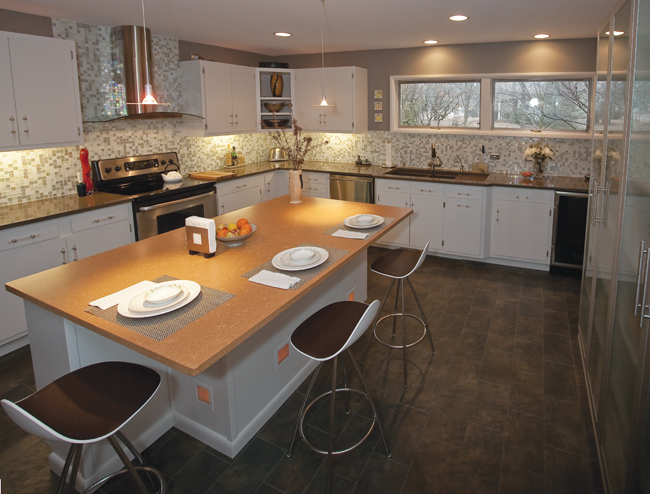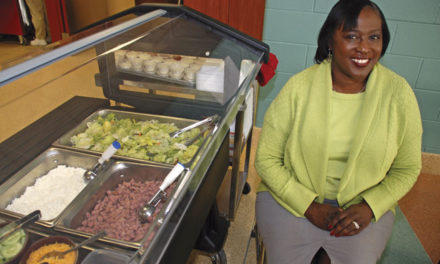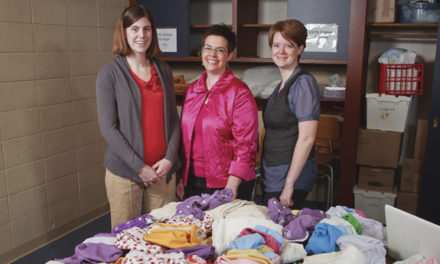BY DALE BURG
“For older homes to go green is more challenging,” says Bloomington interior designer Becky Gavin. But in renovating her own 1950’s kitchen, she came up with attractive and practical solutions that could be helpful to anyone contemplating an environmentally correct makeover.
Gavin points out that while Energy Star ratings help you know which appliances are energy efficient, there is no such rating system to help you choose among building materials. She began her remodel by looking for products that were durable, long-lasting, and derived from a renewable source. “But you also have to look at the whole life-cycle costs, including production, shipping, and life end—that is, the ability to reuse and recycle the product,” she says. So cork, which qualifies in some respects but is made overseas, is less green than, say, locally produced limestone.
For her floor, Gavin chose floating laminate tiles. Rather than being glued or tacked down, they click and lock together, so a damaged portion is easily replaced and if you want a change, the entire floor can be picked up and reused elsewhere. For countertops, she used CaesarStone, made of quartz and recycled materials. Though as costly as granite, it lasts longer, is more abundant in nature, is very stain-
resistant, and doesn’t need sealing.
A Solatube system that uses daylight for illumination was a huge energy saver. With reflectors and new technology, it collects light in dome-shaped roof structures, and through tubes directs the light into the house—even through an attic space. For under-cabinet task lighting, she used energy-efficient, sealed-can ceiling lights and high-quality fluorescents from Hera Lighting.
The ability to recycle and reuse were Gavin’s main concerns in greening her kitchen. So even though the new kitchen was 50 percent larger and had a different configuration, she kept the original Amish cabinets, built in Napanee, Indiana. She had an island and sink bases built to match, and she removed, spray painted, and re-hung the cabinets.
Materials that she can’t reuse herself, Gavin makes available to others. “Whenever I do remodeling, if there are materials going out, I always take them to ReStore,” she says, referring to the Habitat for Humanity recycling center at 2450 S. Henderson St.
For more ideas regarding green renovations, Gavin suggests checking out the website of the American Society of Interior Designers.
















